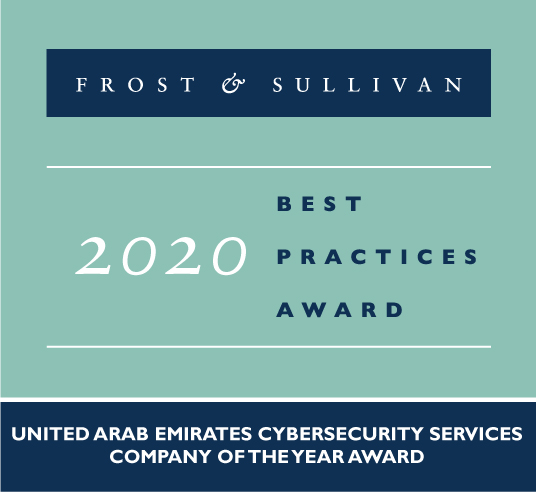30 Good Pieces Of Advice For Picking A Cybersecurity Company in Dubai
30 Good Pieces Of Advice For Picking A Cybersecurity Company in Dubai
Blog Article
Top 10 Tips For Evaluating The Expertise And Qualifications Of A Cybersecurity Services Company In Dubai, Uae
1. Evaluate the professional CertificationsBegin by looking into the professional certificates held by the company's staff. Look for certifications such as copyright Security Professionals(copyright) Certified Information Security Managers(CISM) Certified Ethical Hackers(CEH) or copyright Auditors (CISA). These certifications demonstrate an impressive level of knowledge and commitment towards professional standards.
Review Team Experience
Find out about the background of the team. Question them about their past as well as the number of years they've worked in the cybersecurity field and the previous positions they held. Team members with varied backgrounds from various sectors will offer a broader array of perspectives on cybersecurity challenges.
3. Check Educational Background
Examine educational qualifications of the key employees. Degrees in relevant fields like information technology, computer science, or cybersecurity may indicate solid knowledge of the area. Credibility can be enhanced by combining higher education credentials along with professional certificates.
4. Analysis of specialization areas
Find any areas of specialization among the team members. It may be advantageous to have expertise in certain areas, like cybersecurity of the network or data security. Expertise in specific areas can help you find the most effective solutions to your specific cybersecurity issues.
5. Learn about the continuing training and development
Evaluate the company's commitment towards continuing education and training of its employees. Cybersecurity is a rapidly evolving field and continuing education via seminars, workshops, and additional certifications is vital to keep your knowledge current.
Review Past Projects & Case Studies
Find out about their past projects or case studies. Learn more about their ability to solve problems and efficiency by reading thorough descriptions of the security challenges they've tackled for previous clients.
7. Get client testimonials References, reviews and testimonials
Request testimonials or references from customers who have used your service previously. They will be able to confirm your competence and efficiency. Positive reviews are a proof of a strong reputation within the market, and could be a proof of the company's ability to provide top-quality services.
8. Investigation into Industry Engagement
See the company's involvement in cybersecurity. Participation in industry conferences such as webinars, conferences, or contributions to cybersecurity publications may be a sign of a commitment to stay informed about the latest trends and best practices.
9. Examine Research and Development Activities
Find out if the company invests in research and development (R&D) to enhance its cybersecurity offerings. R&D-focused companies are usually ahead of the curve in terms of creating new technologies and innovating solutions. They are able to provide customers with cutting-edge cybersecurity strategies.
10. You can find awards and recognitions
Finally, take a look at any awards or recognitions received by the company in the cybersecurity sector. Awards within the field are a sign of dedication, quality and superior quality of service. They boost the reputation and credibility of a company. Read the recommended Cyber security services for blog examples including cyber technologist, cyber security projects, information security information, technology and cyber security, best cyber security company, cyber technologist, information security and, network security, information and security, network security solutions and more.
Top 10 Tips On How To Assess The Technology And Tools Of An It Security Company Based In Dubai.
1. Technology StackStart off by examining the technology stack of your company. This includes hardware, software and tools. A diverse and robust technology stack indicates that the company is able to address a variety of cybersecurity issues. Look for tools that are aligned with the industry standard.
2. Assess Security Solutions Offered
Examine the security products the company offers. They include firewalls as well as intrusion detection systems. Knowing their scope will help you determine if they meet the security needs of your business.
3. Investigate Integration Capabilities
Take note of how the company's tools and technologies are integrated with the existing systems. It is crucial to ensure seamless integration to minimize disruptions and maximize security. Learn more about the approach of the company to integrating security solutions with your current infrastructure.
4. Request information about Automation and AI
Check the degree to which your company utilizes automation and artificial intelligence (AI) in their cybersecurity processes. AI and automation can increase efficiency and speed of response and speed up response times. AI assists in detecting threats, allowing proactive security measures.
5. Make sure you are checking for software updates regularly.
Learn more about the way that the company manages software updates and patches. Regular updates are essential for protecting against new risks and vulnerabilities. The proactive maintenance of tools way shows that you're dedicated to security.
6. Assess the Vulnerability Management Tools
Take a look at the processes, tools and policies of the business in relation to vulnerability management. It is important to conduct a vulnerability analysis and effectively manage it in order to identify and address potential weaknesses within your system. You should ask what they do to prioritize vulnerabilities and how to address them.
7. Review Incident Response Technologies
Find out about the technology the company uses to deal with incidents. The use of effective incident response software can reduce the damages caused by a breach in security. Be sure to inquire about their response strategies and what role technology plays in this process.
8. Assess Reporting and Analytics Tools
Examine the capabilities of reporting and analytics in the company's software. Comprehensive reporting is a great way to gain insights on security posture as well as incident patterns and compliance. Be sure that the analytics tools are reliable and allow data-driven decisions.
9. Cloud Security Solutions
Review the cloud security practices of the company, given the growth in cloud computing. Organizations that heavily rely on cloud-based services must know how to protect their cloud infrastructures and safeguard the data they save in the cloud.
10. Review Client Feedback on the Tools
Last, ask existing customers for their feedback about the effectiveness of the technology and tools utilized by your company. Case studies or testimonials that showcase the effectiveness of specific technologies could provide valuable insights into their application and efficiency in real-world scenarios. Read the top penetration testing company in uae for website advice including information security usa, cyber security ot, managed security, cyber security consulting company, cybersecurity consultancy, cyber security solution, cyber security analyst, network security in cyber security, information security information, information security and more.
Ten Tips To Help Determine The Security Awareness Training Within The Company That Offers Cybersecurity Services
1. Review Training Content: Begin by reviewing the content of the security awareness programs. Make sure that the training is covering essential topics such as phishing, social engineering, password security, data protection, and the need for compliance. In order for employees to be capable of recognizing and responding to any potential threats, a comprehensive training program is vital.
2. Check for Customization Options
Find out if the training is able to be tailored to meet your organization's specific needs and the culture of your company. The ability to tailor the training to the unique needs and situations encountered by your employees will increase relevance and improve engagement. This will result in better retention.
3. Evaluation of methods for training delivery
Investigate the various delivery methods employed for training. You can choose to use webinars, online courses and interactive simulations. Combining various formats can accommodate different ways of learning and boost overall effectiveness.
4. Interactive Elements
Check if interactive components are used in the training including simulations, quizzes and real-life scenarios. Interactive training improves learning retention and participation, making it easier for personnel to use the knowledge they've acquired in real situations.
5. Examine the frequency of updates
Find out how frequently the content and training sessions are updated. In order to keep your employees informed about the latest cybersecurity risks it is essential to have regular training sessions.
6. Examine Measurement of Efficacy
Seek out metrics like assessments of post-training and pre-training including feedback from participants and incident reporting trends. Look for trends in feedback from pre- and post-training as well as participant evaluations and incident reports. The results of the training can be evaluated to determine its effectiveness and to identify areas to improve.
7. Make sure you have the right certification and are in compliance
Make sure the program gives certificates upon successful completion. Credibility is enhanced by certifications and demonstrate that employees have acquired the skills they require. Ensure that your training program is in line to any compliance requirements for regulatory compliance you might have.
8. Find Testimonials and references
Get feedback from organizations who have used your service before. Testimonials can provide an insight into how well the training was accepted and the efficiency. Positive feedback from customers could be a sign that a trainer is well-known for providing effective awareness-training.
9. After-Training Support: Assess it
Get support after training. Continuous resources, like periodic refresher courses, newsletters or access to a knowledge base will help to reinforce the education and keep cybersecurity awareness at the forefront of employees' minds.
10. Review the level of engagement and culture building
Decide on the way your training program can help in establishing a culture of safety within your company. Find initiatives like workshops, security newsletters or contests that promote continuous awareness. Strong security culture encourages everyone to take a responsibility in protecting your business. Read the recommended iconnect for site advice including cyber security risks, cyber security tech, it security services company, information security logo, info security, cyber security company near me, cyber security cybersecurity, cyber security cybersecurity, security network security, it security technologies and more.